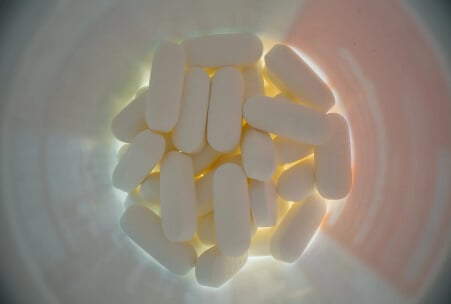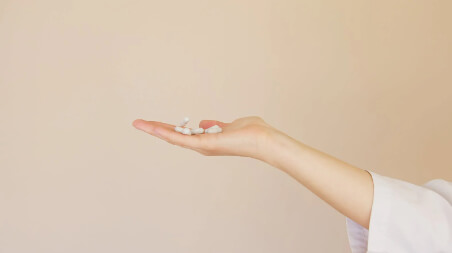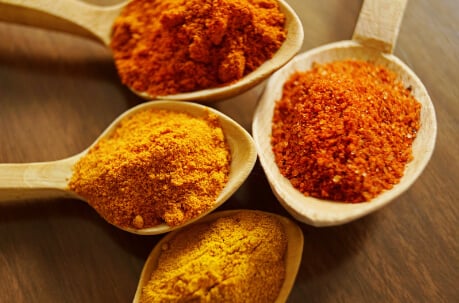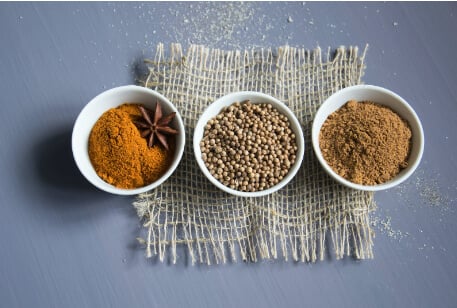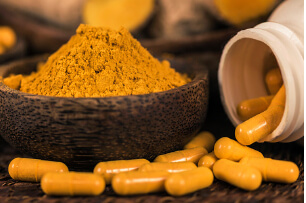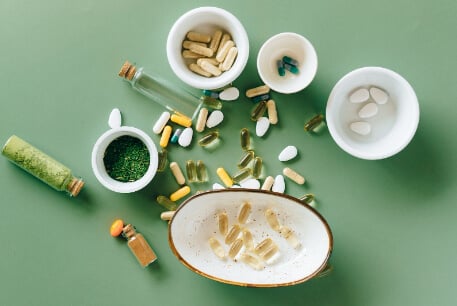Only a few natural compounds have exhibited such a broad spectrum of defensive qualities as curcumin. However, curcumin's poor solubility, low intestinal absorption, quick metabolism, and rapid systemic elimination are some of its challenges. Many supplement makers have explored a variety of strategies to improve absorption and bioavailability with piperine nanoparticles or emulsions, including using Tetrahydrocurcumin.
Curcumin, bisdemethoxycurcumin, and desmethoxycurcumin are turmerics three primary bioactive components known collectively as the curcuminoids. Numerous pharmacological effects of these curcuminoids include Anti-Inflammatory, antioxidant, antiCancer, Antibacterial, Antiviral, and antiDiabetes properties.However, the poor circulation bioavailability of the curcuminoids restricts their biological effects in vivo. [1]Curcumin once ingested can be metabolized into at least 8 different compounds, and Tetrahydrocurcumin in one of these metabolites.Tetrahydrocurcumin, the most potent metabolite of curcumin, has recently received much attention.. [1] Curcumin once ingested can be metabolized into at least 8 different compounds, and Tetrahydrocurcumin in one of these metabolites. Tetrahydrocurcumin, the most potent metabolite of curcumin, has recently received much attention.

Tetrahydrocurcumin is not commonly present in turmeric extract powders used in dietary supplement products containing 95% curcuminoids; however, it does show up in the plasma when we consume curcuminoids. Tetrahydrocurcumin has been demonstrated to be the most effective antioxidant of the curcumin metabolites and plays a significant part in the antioxidant mechanism of curcumin. Research published in January 2014 in the Nutrition Journal examined the bioavailability of several patented curcumin formulations. None of these formulations significantly increased the production of tetrahydrocurcumin in vivo, even though they all improved the absorption of the curcuminoids,
meaning that curcumin and tetrahydrocurcumin can be absorbed independently and work together or independently.
Although a portion of curcumin gets metabolized (i.e., converted) into tetrahydrocurcumin, each molecule still has unique health benefits that differ from one another but in other occasions curcuminoids can overlap in function. [8]
For example, the free radical scavenging potential of several curcuminoids, including tetrahydrocurcumin and bisdemethoxycurcumin, was compared. Tetrahydrocurcumin, curcumin, and bisdemethoxycurcumin were found to be the most effective consequently. [2]
Tetrahydrocurcumin and Curcumin
Tetrahydrocurcumin and curcumin offer different advantages over one another. Therefore, it makes sense to consume both rather than just one. That is because eventhough they overlap in some functions, curcumin is better at some biological functions than tetrahydrocurcumin and vice versa. So, it may come down to which biological function is of most importance to you.
Most research has shown that while curcumin has both pro- and antioxidant characteristics, tetrahydrocurcumin has a stronger antioxidant activity.
Tetrahydrocurcumin is a more potent antioxidant activity than curcumin in one study. As a result, it must be a vital component of the antioxidant mechanism of curcumin in vivo. Tetrahydrocurcumin was found to have significant antioxidant effects in other independent studies as well. [3][4][9]
So what are some of the highlights of taking tetrahydrocurcumin in addition to curcumin?
Tetrahydrocurcumin Qualities
It has been demonstrated that tetrahydrocurcumin possesses particular neuroprotective qualities. Tetrahydrocurcumin was shown in one investigation to have anti-toxic properties against oligomeric amyloid-I2-induced toxicity. In Alzheimer's disease, this antioxidant activity may have a neuroprotective impact. [5]

Diabetes is one of the disorders that oxidative stress has been linked to. Tetrahydrocurcumin was shown in a different study to increase the overall number of insulin binding sites, which led to a considerable rise in plasma insulin. Note that this impact outperformed curcumin.
Tetrahydrocurcumin was also more effective than curcumin in increasing plasma insulin, normalizing blood glucose and improving carbohydrate metabolisms.
Additionally, tetrahydrocurcumin exhibits potent cardioprotective qualities. In research published in Hypertension Research, tetrahydrocurcumin reduced Hypertension and counteracted the effects of oxidative stress, aortic wall stiffness, and thickness. Tetrahydrocurcumin may be considered a preventative measure against cardiovascular changes when nitric oxide is lacking.
Tetrahydrocurcumin was also better than curcumin in suppressing LDL oxidation, which accumulate in our arteries.
Tetrahydrocurcumin, which comes from curcumin when curcumin is metabolized, has different protective characteristics from curcumin. As mentioned above, tetrahydrocurcumin is a superior antioxidant but lacks some Anti-Inflammatory and pro-oxidant properties, that curcumin can still target.
To be fair, curcumin also provides plenty of biological advantages that tetrahydrocurcumin does not possess, like suppression of some types of leukemias or reduction of bacterial and viral Infections, to name but a few.
The research on tetrahydrocurcumin is just beginning. We have provided some highlights for this compound but there are still others such as the effects on aging and specific Cancer that are also being researched. But more questions remain to be answered. For example, tetrahydrocurcumin is a powerful metabolite of curcumin, according to research, but what is this metabolite transformed into when consumed alone?
Will it provide the same results as its parent chemicals when used in vivo? Some researchers are now addressing these questions.
What does skin-care tetrahydrocurcumin do?
THC and curcuminoids, which preserve the skin, ought to be taken into account for use as valuable antioxidants in topical therapies. THC counteracts the skin-aging effects of free radicals produced by exposure to chemicals, UV light, and other environmental stressors. Curcuminoids and THC both depend on its bioavailability and concentration for their effectiveness, with THC being much more potent at lower doses. THC prevents fats from oxidizing by providing protection against the rancidity of the fat ingredients used in cosmetic formulations, which extends the shelf life of topical formulations. [6]

It has been demonstrated that tetrahydrocurcumin effectively inhibits tyrosinase. As a result, it is a powerful skin-lightening agent with numerous topical advantages. It has undergone testing to ensure that there are no irritating or sensitization adverse effects when used topically. [7]
THC's Anti-Inflammatory properties make it a beneficial ingredient in anti-aging formulations, skin-lightening and brightening treatments, and topical formulations intended to maintain the overall health and integrity of the skin.
References:
- https://onlinelibrary.wiley.com/doi/abs/10.1002/ptr.7538
- https://www.mdpi.com/1422-0067/23/16/9237
- https://www.mdpi.com/1420-3049/27/16/5100
- https://www.sciencedirect.com/science/article/abs/pii/S002228602202004X
- https://link.springer.com/article/10.1186/s12974-022-02565-0
- https://academic.oup.com/jnen/article/81/7/545/6585246
- https://onlinelibrary.wiley.com/doi/abs/10.1111/jocd.14746
- https://www.ncbi.nlm.nih.gov/pmc/articles/PMC6272158/
- https://www.jstage.jst.go.jp/article/bpb/30/1/30_1_74/_article


